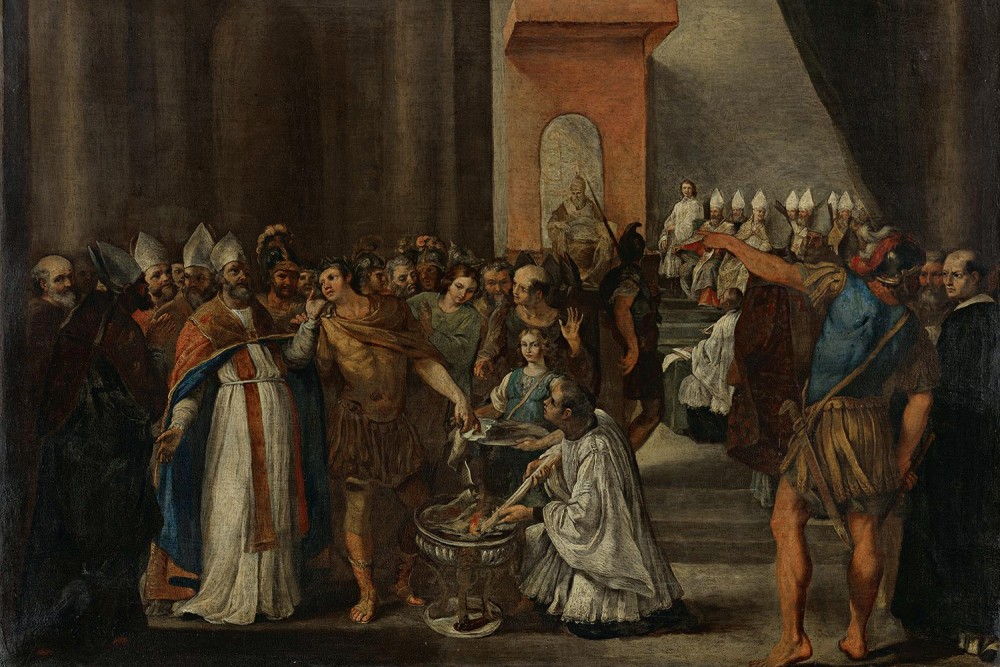Nicene myths
The Athanasians won, so they got to tell the story of Arianism. Arius would barely have recognized it.

Emperor Constantine burning Arian books at the first Council of Nicaea in 325, ca. 1640s, by Carlo Magnone (Heritage Image Partnership / Art Resource, NY)
In May 325, 300 bishops responded to the summons of the Roman emperor Constantine, gathering at Nicaea, in present-day Turkey, to discuss pressing theological controversies then dividing the church. That event, the Council of Nicaea, has featured prominently in the church’s memory, from historical accounts of the church’s theology and its relationship with state power to artistic visions of the proclamation of orthodoxy. In this 1,700th anniversary year, what must strike us most powerfully about that council is the very different ways we tell our stories—and how one version overrides and eliminates its competitors. It comes to be the plain truth, even the only truth.
As usually recounted, the Nicene story tells how the early church formulated its doctrine of the Trinity, in which Father, Son, and Holy Spirit always coexisted. John’s Gospel starts by declaring that the Word, the Son, was there “in the beginning.” Around 310, the Alexandrian presbyter Arius taught the seditious rival doctrine that the Father, who genuinely was from eternity, had generated or begotten the Son. This might have occurred mere nanoseconds after the moment of creation, but even so, there was a time when the Son was not, and that fact marked a fundamental distinction between the two persons. The Son was begotten and was subordinate to the Father. The Alexandrian church condemned Arius, and that decision was decisively endorsed at Nicaea, where only two of the assembled prelates dissented. Athanasius emerged as Arius’s main foe and the nemesis of his cause. Christian orthodoxy was saved.
In recent decades, scholars such as Rowan Williams have devoted immense attention to Arius and Arianism, stressing that the two are by no means the same. Their scholarship raises questions about the Nicene conflict, questions that should be asked about many of the church’s debates.




